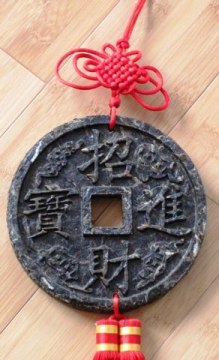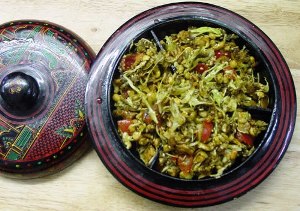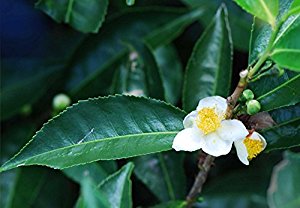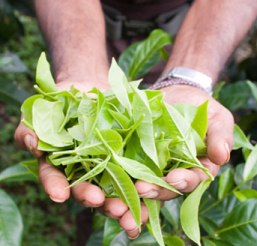Suzanne takes you down to her place near the river . . .
And she feeds you tea and oranges
that come all the way from China . . .
I grew up hearing Leonard Cohen croon these words over and over. Telling perhaps about my age and background, but important as an introduction to the history of tea as well. As a global drink, that came out of Asia and is now enjoyed in different forms worldwide, the history of tea is important to the Silk Road, and to understanding the history of Old World trade in general. And everyone – including Leonard Cohen – knows it comes from China, right? Well, it turns out that the answer to that last question is really a lot more complex than it seems.
There is so much scholarship on the history of tea. And yet, almost all of it omits an important part of the story, namely that wild tea, or the closest thing that we have to it today is native to Burma.

Around 350 ACE we have two solid pieces of information to document the use of tea in China as a medicine. The first is in an update of an ancient Chinese dictionary known as the Erh ya revised by Kuo Po. In this the drinking of tea as a medicinal beverage is clearly described as are the details about the plant and leaves. Geographical information about where the plants grow is also offered and lovely touches like how many men’s armspans the tea-tree trunks are. Clearly, this is tea and not a brewed beverage made from some other sort of plant. Slightly later in that century, there is documentation about the transport and planting of large numbers of tea plants from Yunnan to Szechuan Provinces – the likely beginnings of mass cultivation. Tea drinking as a medicinal beverage and the use of its flavor for culinary use grew in popularity over the next few centuries in China until Lu Yu’s Tea Classic (Ch’a Ching) is published in 780 ACE. So, there is a solid, documented history of tea drinking in China for at least 1700 years.
I’ve always been the sort to peek behind doors and curtains when I walk into a room, and yes, I always surreptitiously opened my gifts before Christmas morning when I was a kid. So for me, the less documented part of the tea-use story is the most fascinating part. If there is a mystery, I love to get digging.
It turns out that indigenous peoples in Burma and Assam (northeast India) pick young tea leaves and brew them, and they have done this for as long as anyone can remember. In other words it is not a learned activity from the neighboring Chinese or from western colonists. On a small scale, before the colonials, these same indigenous people also engaged in cultivation of tea with each family group growing subsistence levels for personal consumption. Additionally, many of these peoples carry tea seeds with them when moving from one settlement to another – indicating the importance of the plant to them.
Burmese cuisine also claims six flavors: sour, bitter, salty, astringent, sweet and spicy. And yes, you guessed right if you knew that the principal “astringent” flavor was represented by tea.

Ground or pulverized tea leaves or the use of tea-beverage itself are also used as flavorings from China (tea eggs, to flavorings for soup, vegetable dishes and spring rolls) to Pakistan (a flavoring for chickpeas and other pulses). But to my knowledge, the direct mass consumption or fresh fermented or pickled tea leaves is uniquely Burmese.
Tea leaves are also chewed for a stimulant effect (not unlike betel, tobacco and coca) in Burma, Laos and Thailand and miang production is an important rural industry. Leaves are steamed, wrapped into individual bundles then packed into containers and weighted down. They are then covered with banana leaves. Young leaves are fermented for a few days to a week and mature leaves are fermented for as long as a year.
So, a survey of other indigenous and national practices in the countries bordering western China’s Yunnan province – popularly noted as the birthplace of tea – show us that tea drinking and the eating or chewing of tea leaves takes place in nearby Burma and Laos and also is evident in Assam and in Thailand. What this suggests is that tea drinking and eating is probably ancient across the entire region and not something that is uniquely Chinese.
Modern molecular systematics also suggests an ancient regional use of tea. A study done by a team of researchers from China and Japan (Phytochemistry 71 (2010) 1342–1349) have used the phytochemicals in tea to create a “family tree” of different tea species and varieties called a dendrogram.

The earliest large-scale production of tea in China was in the form of easily transportable tea “bricks” and was made from C. sinensis var. assamica leaves. Pu’er tea is still made from the same plants and sold in brick form to this day. Chemosystematic analysis of several of the polyphenols from almost 100 tea species or varieties by the Chinese-Japanese research team indicate that the closest “wild” ancestor to these assamica leaves comes from the area near Dali, China and is often referred to as Dianmien tea. The tea species this represents is Camellia irrawadiensis – which is native to Burma, Laos and western China.
So a history of tea is indeed complex and made more so by the repetition of myths and legends. But there is also the value of indigenous practices versus mass cultivation and consumer trade to consider, and the importance of the value of oral history versus the published word at play as well. Modern science is throwing its hat into the ring and is helping to unravel this tangled skein of tea tales. More stories from the Tea-Horse Road and the “discovery” of tea by western colonialists will follow on a periodic basis. (Words and research by Laura Kelley. Photos of modern Pu’er tea bricks borrowed from Google images).

